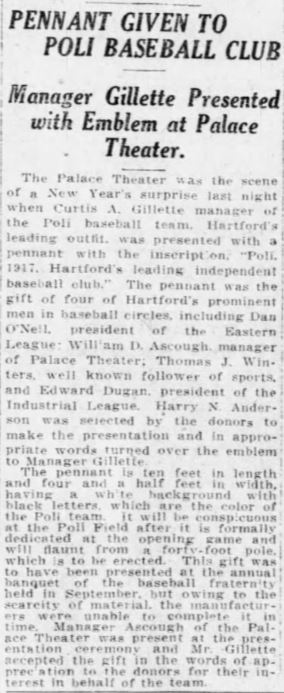On Friday night, August 15, 2025, M&T Bank won the Playoff Championship behind a one-hit pitching performance by starter Nicholas Cannata and a perfect frame by closer Bobby Herzman. M&T Bank downed the East Hartford Jets, 5-0. The deciding run was a line drive homer over the right field fence by Greyson Pizzonia. A few wall-banging RBI doubles by Alex Rodriguez and Zack Nakonechny sealed the deal.

The summer ended on a high note for M&T’s longtime manager, Tom Abbruzzese, who resides in Wethersfield. He tallied his 16th all-time GHTBL title and his first postseason pennant since 2006. In fact, Tom has patrolled the third base coach’s box for fifty consecutive years. His longevity and service to the Twi-loop has been matched by few. Names like Frank McCoy Sr. and Gene Johnson come to mind as far as time-served, but Abbruzzese stands apart as GHTBL’s longest serving manager. The league is 96 years young, and Tom has been closely involved for a majority of its history. What a career!

Abbruzzese recruited a spectacular club for the 2025 campaign. M&T Bank went 14-9 in the Regular Season and 4-0 in the Playoff Tournament. The Bankers had six players named All-Stars this year: Cooper Johnson (OF), Braiden Alaimo (2B), Brendan Lynch (3B), Willy Yahn (SS), Zack Nakonechny (1B) and Jack Kelley (P). They displayed excellent fundamentals and ability in the playoffs, alongside other contributors like Justin Miller (OF), Josiah Ross (OF), Tyler Fote (2B), Jordan Jeroszko (IF) and Chad Lavelle (UTIL).
Watch the final pitch of the championship game and trophy presentation:
Congratulations to M&T Bank!
We’ll see you next at the GHTBL All-Star game against West Haven Twilight League.
You can also sign up for our 9th Annual GHTBL Golf Tournament on October 12th!
Sources
Photography by Richter Visuals









































































































































